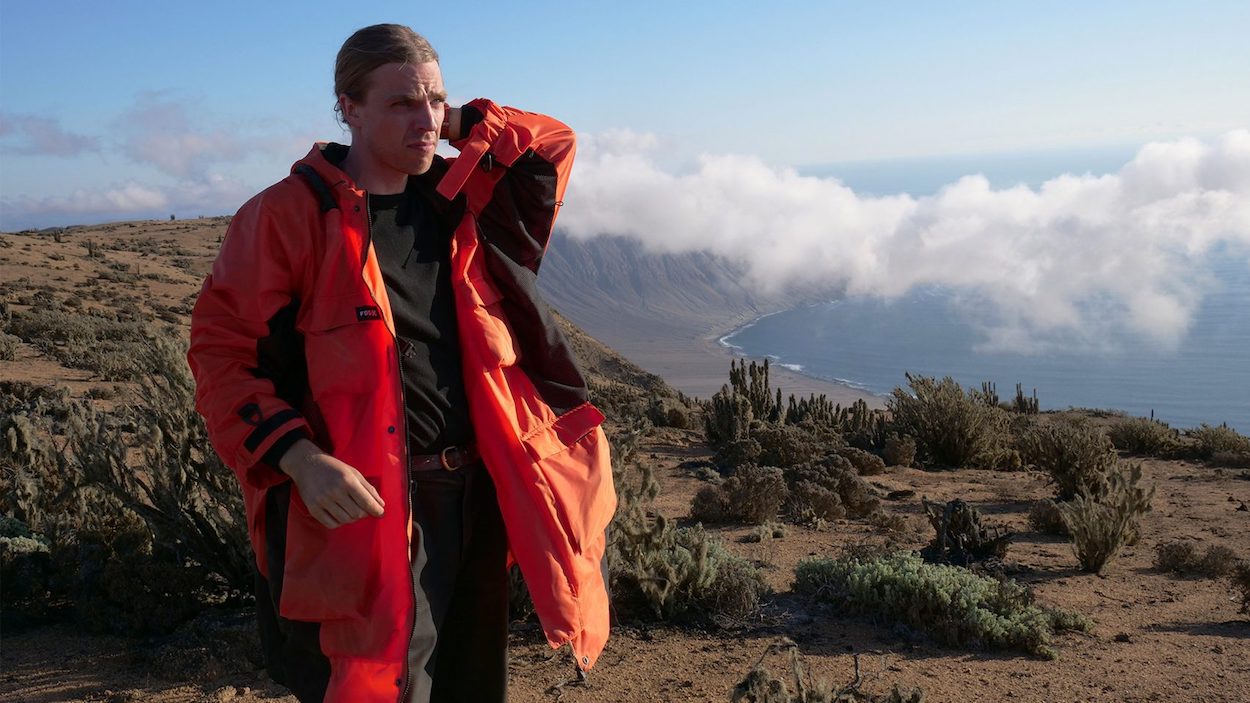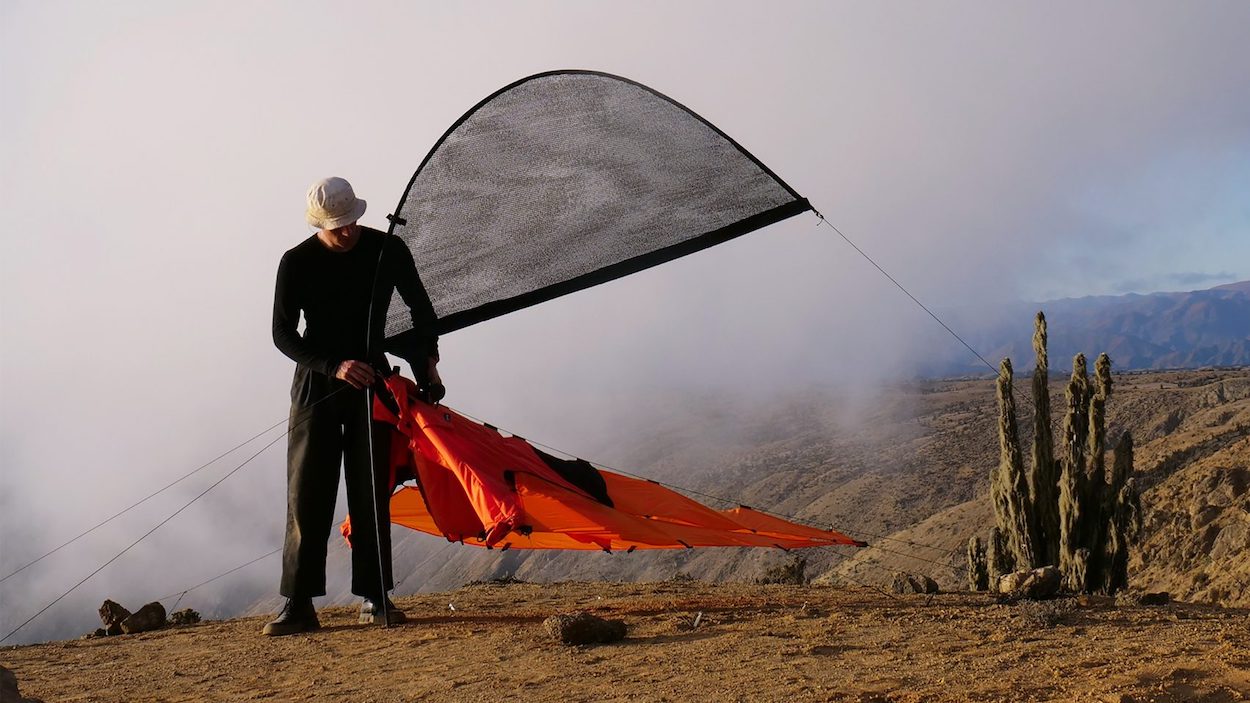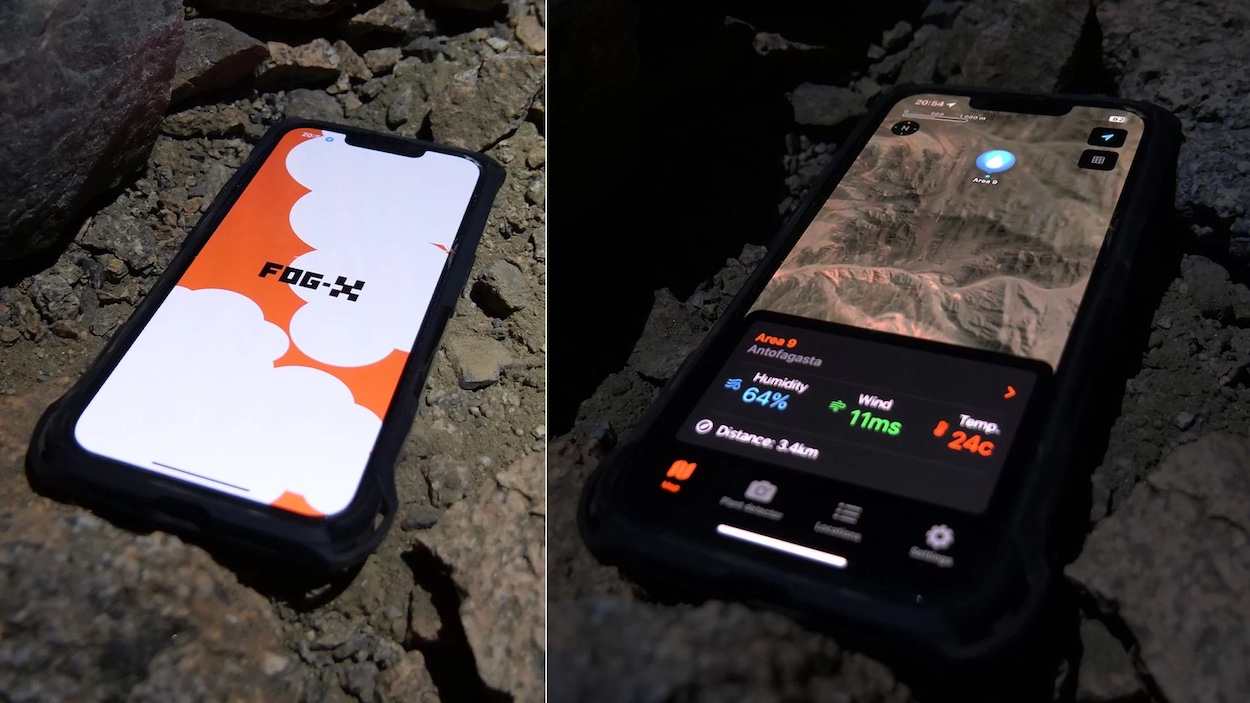Few drier places exist than Chile’s Atacama Desert, a 1,000-mile-long strip of land wedged between the Pacific Coast and the Andes. Some of the desert’s far-flung regions receive less than an inch of annual rainfall, meaning animal and plant life rely on fog drip from the sea breeze to supply the moisture needed to sustain life. (The fog lends the arid region an otherworldly appearance, drawing comparisons to Martian terrain—Space Odyssey: Voyage to the Planets even filmed there.)
Scientists have tested out mesh nanofiber screens that capture precious droplets from sea air and convert them into drinking water since the 1960s, but a new prototype is taking these experiments to the next level. Instead of stationary screens, Swedish designer Pavels Hedström incorporated the mesh material into the fabric of a jacket called Fog-X that allows travelers to produce water as they walk. The mesh captures fog droplets, then gravity pulls them through a channel and into an integrated “bladder” that stores water. Fog-X can also be converted into a shelter, shielding travelers from one of the Atacama’s other main threats: harsh sunlight.
Hedström, who hails from Copenhagen and studied Architecture and Extreme Environments at the Royal Danish Academy, received the coveted Lexus Design Award for Fog-X. The accolade nurtures emerging talent by offering a platform to showcase prototypes intended to better the human condition. A panel of professionals selects a group of finalists from thousands of entries, offering them mentorship, funding, and support to realize their ideas, as well as visibility with an exhibition during Milan Design Week. Previous winners include Lisa Marks’ custom 3-D modeled bras tailored to breast cancer survivors who’ve undergone mastectomies and BellTower’s program that uses open-source planning to provide access to clean water resources in developing countries.
Thanks to the award’s mentorship, Hedström is developing a mobile app that helps users locate foggy areas using GPS. While Fog-X helps address water scarcity, Hedström acknowledges that more work remains to make the concept—whose estimated retail price hovers around $440—more accessible for the world’s most vulnerable groups. “The jacket itself is not the solution for water scarcity,” Hedström told Dezeen, “but it shows a direction we could go down. This takes it further than just being a jacket—it’s a vision of how we can engage with nature and build new types of infrastructures with as low impact on the environment as possible.” Until then, he’s exploring how the material can be applied onto smaller, low-cost devices.



